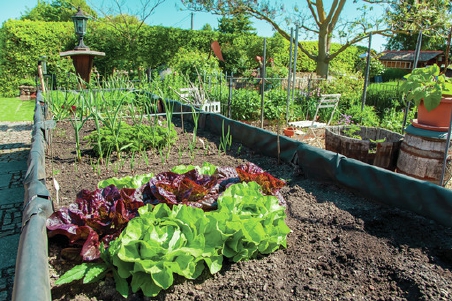I am not super fond of bugs BUT I do love worms. Technically worms are NOT bugs. Ok, to me they are but…according to science, they are part of the Kingdom Animalia which includes worms and insects. However, worms have no backbone like animals and are considered to be invertebrates.
Another interesting and useless tidbit is that worms don’t have eyes. They can, however, sense light and dark. Worms are hermaphrodites. That means they are both male and female. They do mate to reproduce and it happens often, about once a week. That means there are plenty of worms. They double their population every two months or so.
Why am I spouting facts about worms? I just made my very first worm box, that’s why. The Virginia Association for Biological Farming recently held their annual 3-day conference and I was thrilled to attend. Learning never stops and exploring (anything and everything), is my favorite pastime. Since I am an organic gardener, worms are my friends and I encourage worms to multiply in our garden beds and compost piles. So why did I make a worm box?
During the winter months, both the soil in the garden and our compost piles freeze when temperatures drop to 32 or below. The worms can stand it till about 40 degrees and then they will burrow down deep into a compost pile or the ground to seek warmth. A compost pile generates heat from the rotting vegetable waste and any animal manure you might add, so the worms are usually comfy and continue to munch away.
Why are worms so good for our compost? Not only do they act as nature’s decomposers by eating our leftovers, they excrete vermicast. Also known as plain ole worm poop or worm castings, these feed the soil nutrients in the form of natural fertilizers. You can’t ever add more than too much because it is completely safe and odorless, even for seedlings. That’s all good news. When worms are added to our garden beds in our finished compost matter, they dig down deep and go to work making tunnels. They bring soil back up to the ground’s surface and their tunnels allow nutrients and rain to go back down into the soil. Ain’t it great how nature takes care of business?
So back to my new pets. There’s about 100 red wiggler worms in there now, munching away my veggie scraps. Here’s how I made a worm bin at the conference to take home in the DIY course I took there. Using a 20 gallon plastic storage tote, we punched about 12 holes in it, covered the holes with mesh to keep the critters in, then filled it less than halfway with a layer of organic potting soil, a layer of shredded paper, and then worms! Lightly water the whole mess and cover it with one sheet of cardboard, put the lid on and that is it. At home, I added some food scraps, just a handful or so, dug into the dirt and covered it back up. So far, my worms are still alive and still eating. Success!
What I can say is that for the amount of kitchen waste we produce daily being 75% vegetarian, I have more waste than the little buggers (I know, I know!), can consume daily. So, much of my leftovers still go outside in the compost pile. I have concluded that a worm box is a fun hobby. The worm castings I will collect in another month may be worth the entire project and the big space this worm bin takes up, but the jury is out for now. The instructor I met has a set up in her office of about 20 worm boxes so she is basically in full production mode. That makes it all worth it for the end product: worm castings.
One very important note about beneficial critters in your garden, or compost, or worm bin: biocides kill worms. That means herbicides, pesticides, or fungicides will knock off any living creature including birds, and possibly frogs. Avoid biocides if you want to work in harmony with nature and let HER do the work as intended…it’s nature’s way!
(Karen Cohen is an organic gardener, photojournalist, and avid explorer. Email your tips and comments to natureswaykaren@gmail.com, and happy growing!)


